Private Jet Rental Cost: Understanding the Factors

Private jet rental cost is a topic that often sparks curiosity and intrigue. Whether you’re a seasoned business traveler seeking unparalleled convenience or a leisure enthusiast yearning for an extraordinary journey, understanding the factors that influence private jet rental costs is crucial.
This guide delves into the intricacies of private jet rentals, providing insights into the various aspects that shape the final price tag.
From aircraft type and distance to time of year and route complexity, numerous factors contribute to the overall cost of chartering a private jet. We’ll explore the typical cost components, including hourly rates, landing fees, catering, and crew expenses, to shed light on the financial implications of this exclusive mode of travel.
Additionally, we’ll compare the pricing structures of on-demand charter flights and jet card programs, offering a comprehensive understanding of the available options.
Understanding Private Jet Rental Costs

Private jet rental costs are influenced by several factors, making it essential to understand the intricacies of pricing before making a decision.
Factors Influencing Private Jet Rental Costs
The cost of renting a private jet is determined by various factors, including the type of aircraft, distance of the flight, time of year, and route complexity.
- Aircraft Type: The size and capabilities of the aircraft significantly impact rental costs. Larger jets with more amenities and longer ranges naturally command higher prices. For instance, a light jet like the Cessna Citation CJ3 will be significantly cheaper to rent than a heavy jet like a Gulfstream G650ER.
- Distance: The distance of the flight directly affects the cost. Longer flights require more fuel, resulting in higher rental fees. For example, a transatlantic flight will be more expensive than a short hop within a single country.
- Time of Year: Demand for private jets fluctuates throughout the year, impacting rental costs. Peak seasons, such as holidays and summer months, generally see higher prices due to increased demand.
- Route Complexity: Flights with complex routes, such as those with multiple stops or landings at smaller airports, can incur additional costs. These costs may include landing fees, airport taxes, and potentially longer flight times.
Breakdown of Typical Cost Components
Private jet rental costs are typically broken down into several components, including hourly rates, landing fees, catering, and crew expenses.
- Hourly Rates: This is the primary cost component, reflecting the cost of operating the aircraft per hour. Hourly rates vary depending on the aircraft type and can range from a few thousand dollars per hour for smaller jets to tens of thousands of dollars per hour for larger, more luxurious jets.
- Landing Fees: These fees are charged by airports for using their facilities and can vary significantly depending on the airport and the type of aircraft.
- Catering: Catering costs can include meals, snacks, and beverages for passengers and crew. These costs can vary depending on the type of service requested, such as basic snacks or a full gourmet meal.
- Crew Expenses: This component covers the salaries and expenses of the pilots, flight attendants, and other crew members. The number of crew members required depends on the size and type of aircraft.
On-Demand Charter Flights vs. Jet Card Programs, Private jet rental cost
Private jet rental options can be broadly categorized into on-demand charter flights and jet card programs.
- On-Demand Charter Flights: This option allows clients to book flights on a per-flight basis. While offering flexibility, it may not be cost-effective for frequent flyers. The cost for on-demand charters is calculated based on the actual flight time and distance.
- Jet Card Programs: These programs offer a prepaid system where clients purchase a set number of flight hours at a discounted rate. Jet cards typically provide a more predictable cost structure and may include additional benefits, such as priority booking and access to a dedicated concierge service.
Aircraft Types and Cost Ranges
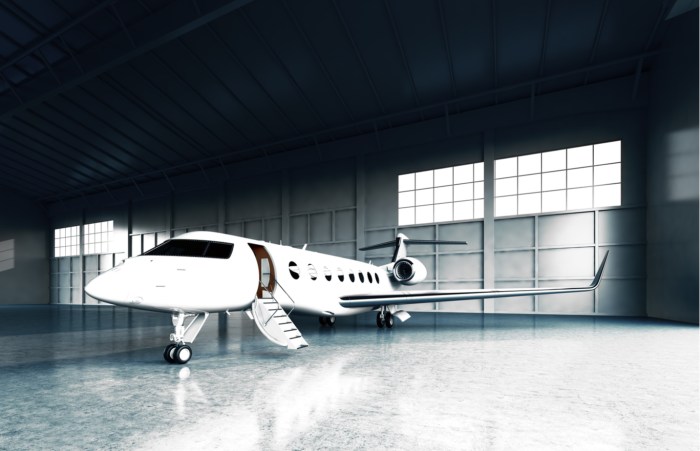
Private jet rental costs vary significantly based on the type of aircraft you choose. Each aircraft category offers unique advantages and disadvantages, influencing your overall travel experience and budget. Understanding these differences is crucial for making an informed decision.
Aircraft Types and Cost Ranges
Here’s a table outlining common private jet categories, their typical hourly rates, passenger capacity, and range:
| Aircraft Type | Typical Hourly Rate | Passenger Capacity | Range (Nautical Miles) |
|---|---|---|---|
| Very Light Jet (VLJ) | $1,500
|
4-6 | 1,000
|
| Light Jet | $3,000
|
6-8 | 1,500
|
| Mid-Size Jet | $4,000
|
8-10 | 2,500
|
| Super Mid-Size Jet | $6,000
|
10-12 | 3,500
|
| Heavy Jet | $8,000
|
12-16 | 4,500
|
| Ultra-Long Range Jet | $10,000
|
12-16 | 6,000
|
Advantages and Disadvantages of Different Aircraft Types
The advantages and disadvantages of each aircraft type are directly linked to their size, range, and comfort features.
Very Light Jets (VLJs)
- Advantages: VLJs are the most affordable option, offering a cost-effective way to travel privately. They are also very fuel-efficient, making them a good choice for shorter trips. VLJs are agile and can land at smaller airports, offering greater flexibility in terms of destinations.
- Disadvantages: VLJs have limited passenger capacity and cargo space, making them unsuitable for larger groups or those needing significant luggage. Their range is also limited, making them less ideal for long-distance travel.
Light Jets
- Advantages: Light jets offer a balance of affordability and comfort, providing a more spacious cabin than VLJs. They are also relatively fuel-efficient, making them a good option for both short and medium-range flights.
- Disadvantages: While more spacious than VLJs, light jets still have limited cargo space and may not be suitable for large groups. Their range is also shorter than larger jets, limiting them to shorter or medium-distance trips.
Mid-Size Jets
- Advantages: Mid-size jets provide a comfortable and spacious cabin experience, with more amenities and legroom. They are also capable of handling longer flights and can accommodate larger groups.
- Disadvantages: Mid-size jets are more expensive than smaller jets and require larger airports for takeoff and landing, which can limit destination options. Their fuel efficiency is also lower than smaller jets.
Super Mid-Size Jets
- Advantages: Super mid-size jets offer a significant upgrade in comfort and amenities, often featuring private lavatories, larger windows, and more spacious cabins. They can handle longer flights and accommodate larger groups.
- Disadvantages: Super mid-size jets are considerably more expensive than smaller jets and require larger airports for takeoff and landing. They are also less fuel-efficient than smaller jets.
Heavy Jets
- Advantages: Heavy jets are the ultimate in private jet luxury, offering spacious cabins, luxurious amenities, and extensive range. They can accommodate large groups and can fly long distances without needing to refuel.
- Disadvantages: Heavy jets are the most expensive option, requiring significant investment. They also require large airports for takeoff and landing, which can limit destination options. Their fuel consumption is also high.
Ultra-Long Range Jets
- Advantage Ultra-long-range jets offer the ultimate in private jet travel, allowing you to fly non-stop across continents. They feature spacious cabins, luxurious amenities, and unparalleled comfort.
- Disadvantages: Ultra-long-range jets are the most expensive option, requiring a substantial investment. They also require large airports for takeoff and landing, and their fuel consumption is extremely high.
Comparing Private Jet Rental vs. Commercial Flights
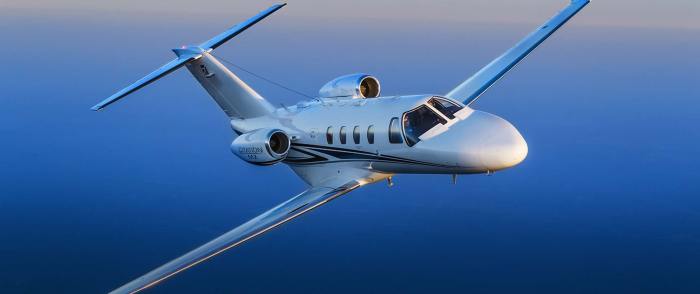
Choosing between private jet rental and commercial flights depends on your priorities and budget. While private jets offer luxury, convenience, and flexibility, commercial flights remain a cost-effective option for many travelers.
Cost Comparison for a Specific Route
The cost of private jet rental can vary significantly depending on factors such as the aircraft type, distance, and time of year. To compare the cost of a private jet rental to a commercial flight for a specific route, consider these factors:
- Distance: Longer distances generally favor private jet rentals, as the cost per mile decreases.
- Time of year: Peak travel seasons, such as holidays and summer, often see higher prices for both private jets and commercial flights.
- Number of passengers: Private jets are typically more cost-effective for larger groups, as the cost is distributed among the passengers.
For example, a round-trip flight from New York City to Los Angeles for four passengers might cost approximately $10,000 for a private jet rental, while a commercial flight could cost around $2,000 per person. However, the private jet offers significant time savings, as it can fly directly to its destination without layovers or delays.
Cost Benefits for Business Travelers
Private jet rental can offer significant cost benefits for business travelers, particularly in terms of time management and productivity.
- Time-Saving: Private jets can avoid airport congestion and long security lines, allowing business travelers to arrive at their destinations faster and more efficiently.
- Flexibility: Private jets offer greater flexibility in scheduling and routing, enabling business travelers to adjust their itineraries as needed.
- Productivity: Private jets provide a comfortable and private environment for business travelers to work, meet, or relax during their flights.
For example, a business executive who frequently travels between New York City and London could save several hours per trip by flying privately. This time saved can be used for productive work or to spend more time with clients or colleagues.
Environmental Impact
The environmental impact of private jet travel is a significant concern, as private jets typically consume more fuel per passenger than commercial flights.
The average private jet emits 10 times more carbon dioxide per passenger than a commercial flight.
However, some private jet operators are taking steps to reduce their environmental impact by using sustainable aviation fuels and implementing carbon offset programs.
Factors Influencing Cost Fluctuations
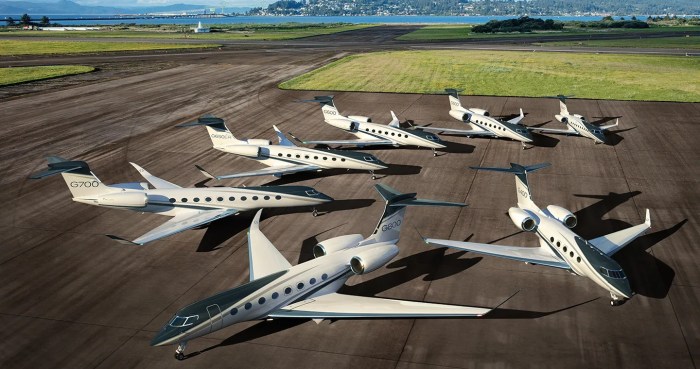
Private jet rental costs are not fixed and can fluctuate based on several factors, including fuel prices, airport fees, and demand. These factors can significantly impact the overall cost of your private jet charter, making it crucial to understand their influence.
Fuel Prices
Fuel prices are a significant factor in private jet rental costs, accounting for a substantial portion of the overall expense. As fuel prices rise, so do private jet rental costs. This is because jet fuel is a major operational expense for private jet operators.
Airport Fees
Airport fees are another crucial factor that affects private jet rental costs. These fees vary widely from airport to airport and can include landing fees, parking fees, and handling charges. Busy airports with high demand for private jet services often have higher fees, which are reflected in the overall rental cost.
Demand
Demand for private jet rentals plays a crucial role in determining rental costs. During peak travel seasons, such as holidays and summer months, demand increases, leading to higher rental rates. This is because operators can command higher prices due to limited availability and increased demand.
Seasonal Price Variations
Private jet rental costs often fluctuate based on the season. During peak travel seasons, such as summer holidays and winter holidays, demand is high, leading to increased rental rates. Conversely, during off-peak seasons, demand is lower, resulting in lower rental rates.
- Peak Travel Periods:
- Holidays (Christmas, Thanksgiving, Easter): There is increased demand from travelers seeking private jet charters for family trips or business travel.
- Summer Months (June-August): There is a high demand for leisure travel, with families and individuals opting for private jet charters for vacations.
- Off-Peak Travel Periods:
- Shoulder Seasons (Spring and Fall): Lower demand, resulting in potentially lower rental rates and offering more budget-friendly options.
- Mid-Week Travel (Tuesday-Thursday): Generally less demand compared to weekends, potentially leading to lower rates.
Last-Minute Bookings and Route Changes
Last-minute bookings and route changes can significantly impact private jet rental costs. When booking a private jet charter at short notice, operators may charge a premium due to limited availability and the need to adjust their schedules. Similarly, route changes can also result in higher costs, as operators may need to factor in additional fuel, airport fees, and operational costs.
Last-minute bookings and route changes can increase rental costs due to limited availability and operational adjustments.
Private Jet Rental Companies and Services: Private Jet Rental Cost
Navigating the world of private jet rentals can be daunting, with numerous companies offering a variety of services. Understanding the different types of companies and the services they provide is crucial for making informed decisions.
Reputable Private Jet Rental Companies
Choosing the right private jet rental company is essential for a smooth and enjoyable travel experience. Several reputable companies operate globally, offering a range of aircraft types, services, and expertise.
- NetJets: A leading provider of fractional aircraft ownership and private jet charter services. They offer a diverse fleet of aircraft, from light jets to large-cabin jets, catering to various travel needs. Their extensive network and comprehensive services, including aircraft management, maintenance, and crew training, make them a popular choice for both individual and corporate clients.
- XO: A tech-driven private aviation company that focuses on providing a seamless and personalized travel experience. They offer a wide range of aircraft options, including on-demand charter flights, jet card programs, and fractional ownership. XO’s platform simplifies the booking process and offers real-time flight tracking and personalized concierge services.
- FlyPrivate: A global private jet charter broker that connects clients with a vast network of aircraft operators. They specialize in finding the most suitable aircraft for specific travel needs, negotiating competitive rates, and managing all aspects of the flight, from booking to landing.FlyPrivate’s expertise and extensive network make it a reliable option for both individual and corporate clients.
- Stratos Jet Charters: A leading provider of private jet charter services with a focus on safety, reliability, and personalized service. They offer a diverse fleet of aircraft, from light jets to heavy jets, catering to various travel needs. Stratos Jet Charters’ commitment to customer satisfaction and their dedication to safety standards make them a trusted choice for discerning travelers.
- Sentient Jet: A leading provider of jet card programs that offer a flexible and cost-effective way to access private aviation. They offer a variety of jet card programs, each with its own set of benefits and flight hours. Sentient Jet’s focus on convenience and transparency makes them a popular choice for frequent flyers.
Broker vs. Operator
The choice between booking directly with an operator or using a broker depends on individual preferences and priorities. Both options have advantages and disadvantages.
- Booking with an Operator:
- Advantages: Direct access to the operator’s fleet and services, potentially lower costs, and greater control over the flight arrangements.
- Disadvantages: Limited aircraft options, potentially more complex booking process, lack of expertise in negotiating rates.
- Using a Broker:
- Advantages: Access to a wider range of aircraft options, expertise in negotiating rates, streamlined booking process, and personalized service.
- Disadvantages: Higher costs, the potential for hidden fees, and less control over flight arrangements.
Jet Card Programs
Jet card programs are designed for frequent flyers who want the convenience and flexibility of private aviation without the commitment of fractional ownership. These programs offer a predetermined number of flight hours at a fixed rate, providing cost predictability and ease of access to private jets.
- Benefits of Jet Card Programs:
- Cost predictability: Jet card programs offer fixed rates for a predetermined number of flight hours, eliminating the uncertainty of fluctuating charter rates.
- Convenience: Jet card programs streamline the booking process, allowing for quick and easy access to private jets.
- Flexibility: Jet card programs offer flexibility in terms of flight destinations and scheduling, allowing for spontaneous travel plans.
- Exclusive benefits: Some jet card programs offer exclusive benefits, such as priority access to aircraft, dedicated concierge services, and airport lounge access.
The Private Jet Rental Experience
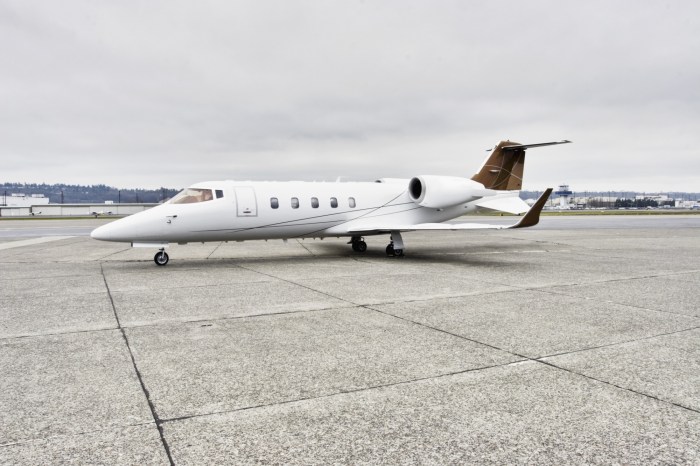
The private jet rental experience is a world apart from commercial air travel, offering a level of comfort, convenience, and personalized service that is unmatched. From the initial booking process to the moment you disembark, the entire journey is designed to cater to your specific needs and preferences.
The Booking Process
The booking process for a private jet rental is typically more personalized and flexible than booking a commercial flight. You’ll work directly with a dedicated charter broker or private jet operator to discuss your travel plans and requirements. This involves specifying your desired flight itinerary, the number of passengers, and any special requests, such as catering or ground transportation.
- Flight Planning: You’ll provide the desired departure and arrival airports, along with the preferred date and time of travel. The operator will then work to secure the most suitable aircraft based on your needs and budget.
- Catering: Many private jet operators offer a wide range of catering options, from simple snacks and beverages to gourmet meals prepared by renowned chefs. You can customize your menu based on dietary restrictions, preferences, and special occasions.
- Ground Transportation: Private jet operators can arrange for ground transportation to and from the airport, including chauffeured cars, limousines, or helicopters. This ensures a seamless travel experience, eliminating the need to navigate crowded airport terminals or public transportation.
Amenities and Services
Private jets are renowned for their luxurious amenities and personalized services. The specific offerings may vary depending on the aircraft type and operator, but here are some common features:
- Spacious Cabins: Private jets typically have spacious cabins with comfortable seating arrangements, often configured to maximize passenger comfort and privacy.
- In-Flight Entertainment: Many private jets offer a wide range of in-flight entertainment options, including high-definition televisions, Wi-Fi connectivity, and on-demand movies and music.
- Catering: As mentioned earlier, catering is a significant aspect of the private jet experience. Operators offer a range of culinary options, from gourmet meals to light snacks, tailored to your preferences.
- Wi-Fi connectivity: staying connected during your flight is essential for many travelers. Most private jets offer high-speed Wi-Fi connectivity, allowing you to work, access entertainment, or stay in touch with colleagues or family.
- Personalized Service: Private jet operators pride themselves on their personalized service. You’ll have a dedicated flight crew at your disposal, catering to your every need and ensuring a smooth and enjoyable journey.
Safety and Security
Safety and security are paramount in private jet travel. Private jet operators adhere to rigorous safety standards and regulations, ensuring the highest levels of security for their passengers.
- Aircraft Maintenance: Private jets undergo regular maintenance and inspections to ensure they meet the highest safety standards. Operators employ experienced mechanics and technicians who meticulously inspect and maintain the aircraft.
- Pilot Qualifications: Private jet pilots are highly trained and experienced professionals who undergo rigorous training and certification processes. They are subject to regular flight simulator training and medical examinations to ensure their skills and physical fitness are maintained.
- Security Measures:P Private jet operators implement stringent security measures at airports and during flights. This includes security checks for passengers and luggage, as well as secure hangar facilities and advanced security protocols.
Closure
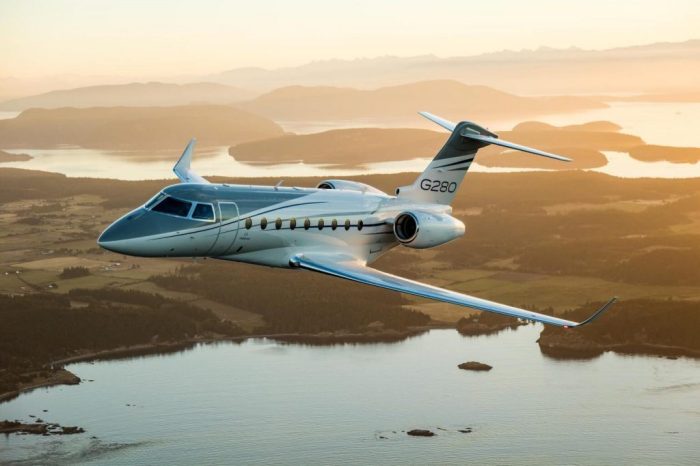
In conclusion, private jet rental offers a unique and personalized travel experience that caters to discerning individuals and businesses seeking exceptional comfort, convenience, and efficiency. While the cost of private jet travel may seem substantial at first glance, the advantages of time savings, flexibility, and personalized service often outweigh the price tag, particularly for those who prioritize seamless travel and productivity.
By understanding the factors that influence private jet rental costs, you can make informed decisions and embark on your next journey with confidence and style.
Comments are closed.